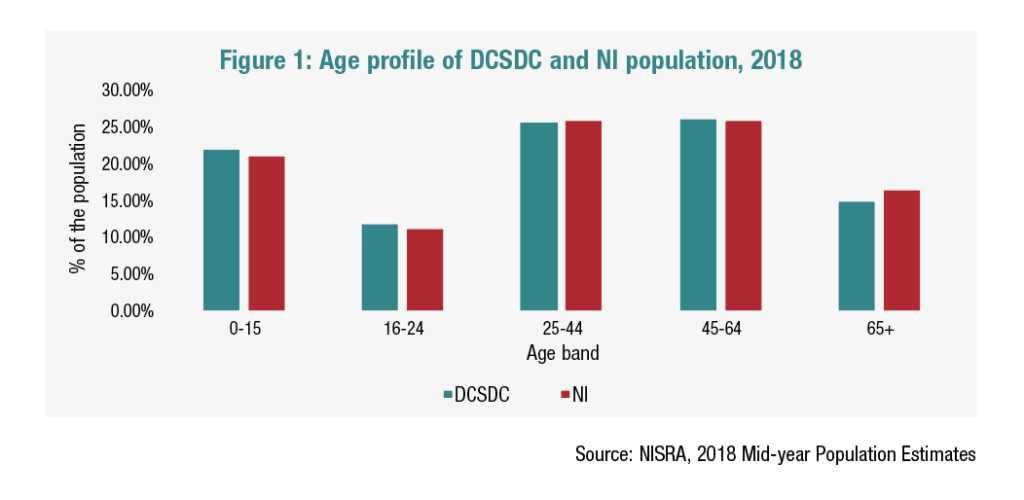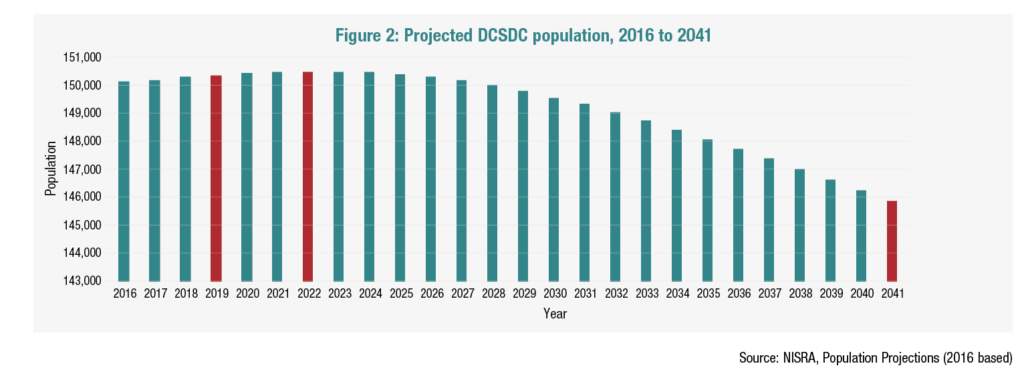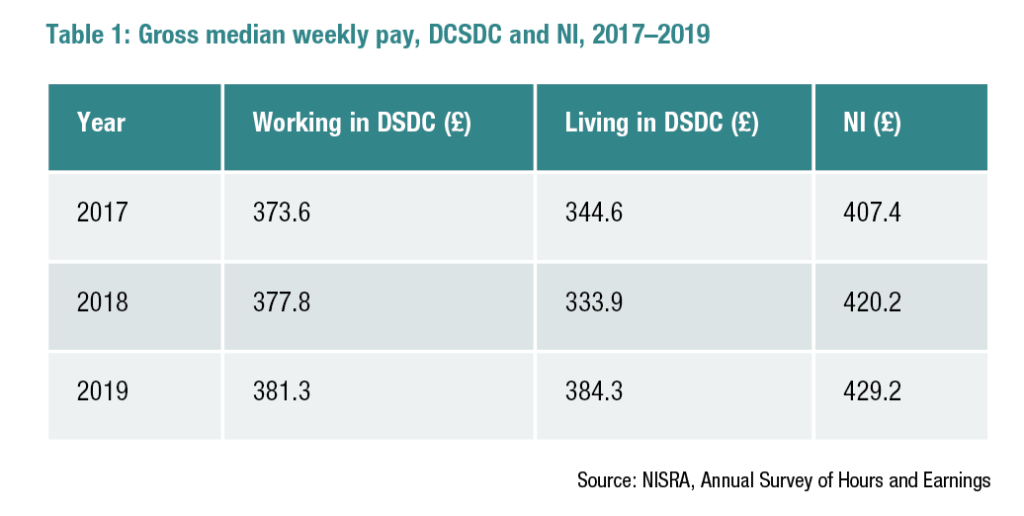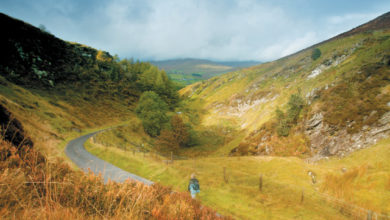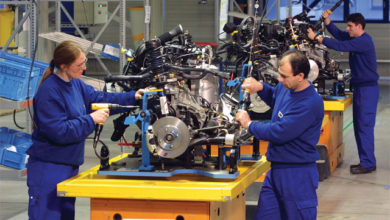Derry City and Strabane

agendaNi profiles some key figures which make up the population and economic profile of the Derry and Strabane area.
Population
In 2018, Derry and Strabane District Council’s (DSDC) population was estimated at over 150,500 with an average age of just under the Northern Ireland average. The largest gaps were in the youngest and oldest age groups. 21.8 per cent of the Council’s population were under the age of 16 compared to the 20.9 per cent Northern Ireland average and 14.9 per cent were 65 or over compared to 16.4 per cent for Northern Ireland as a whole.
Derry and Strabane’s population is increasing. Between 2001 and 2008 the number of people rose by 4.8 per cent, however, figures show a population that is ageing. Both the 45-64 age group (38.3 per cent) and the 65 and over age group (51.4 per cent) have increased in this time frame compared to a 14.2 per cent fall in the number of children aged 15 and under. Derry City and Strabane has the lowest projected population growth of all local government districts out to 2026 at just 0.1 per cent. This compares to the likes of Armagh City, Banbridge and Craigavon and Lisburn and Castlereagh, where a population of 8.9 per cent is expected in both. The area’s expected population changes are in stark contrast to Northern Ireland as a whole, where the population is set to increase by 7.6 per cent by 2041.
Economy
Of the estimated 60,000 people in employment in DCSDC, 45,000 were in full-time employment and the rest in part-time employment. The district has Northern Ireland’s highest unemployment rate. The employment rate for those of working age was 61.6 per cent in 2018 but this figure falls to 52.8 per cent when just looking at citizens over the age of 16. This is in contrast to the Northern Ireland average rates of 70 per cent and 58 per cent respectively. Around 43.6 per cent of all those aged 16 and over in DCSDC were economically inactive.
In 2019, the gross weekly median pay for those working in DCSDC was £381.30 compared to £384.30 for those who live in the council area, both of which were lower than the overall Northern Ireland average (£429.20).
The DCSDC area makes up 7 per cent of all VAT and/or PAYE registered businesses operating in Northern Ireland, and is recognising an upward trend in this figure since 2015. The majority of businesses, much like in Northern Ireland as a whole, employ less than 10 people and the majority turn over less than £100,000 annually.
Agriculture, Forestry and Fishing is the largest industry group in the district council area, making up close to a quarter of all businesses. Beyond agriculture, construction (16 per cent) and retail (8.7 per cent) are the largest.
Health
Life expectancy in DCSDC has increased since 2010 and now sits similar to Northern Ireland average levels. However, female life expectancy continues to be higher than that for men. During 2015-17, females in DCSDC had a life expectancy, at birth, of 81.4 (82.3 Northern Ireland). Males in DCSDC had a life expectancy of 77.7 years at birth compared with a life expectancy of 78.5 for males in Northern Ireland.
Suicide rates for DCSDC have decreased since 2006 but still stood at 17.2 per 100,000 of the population between 2012-16. The Northern Ireland average is 15.8 per cent in comparison but this is the highest of all of the UK regions.
Education
DCSDC’s level of those between 16 and 64 with no qualifications (27.6 per cent) is higher than the Northern Ireland average rate (21.3 per cent). While levels of educational attainment, excluding those with no qualifications, was broadly similar to the rest of Northern Ireland, there is a noticeable shortfall in those with a level 4 (higher education) qualification.
Environment
DCSDC area has considerably reduced the amount of waste that it sends to landfill. In 2017/18, of the 77,707 tonnes of municipal waste generated within the DCSDC area, 28 per cent was converted into energy through an energy recovery process (21,475t); 46 per cent was reused, recycled or composted; and 23 per cent of waste was sent to landfill.

